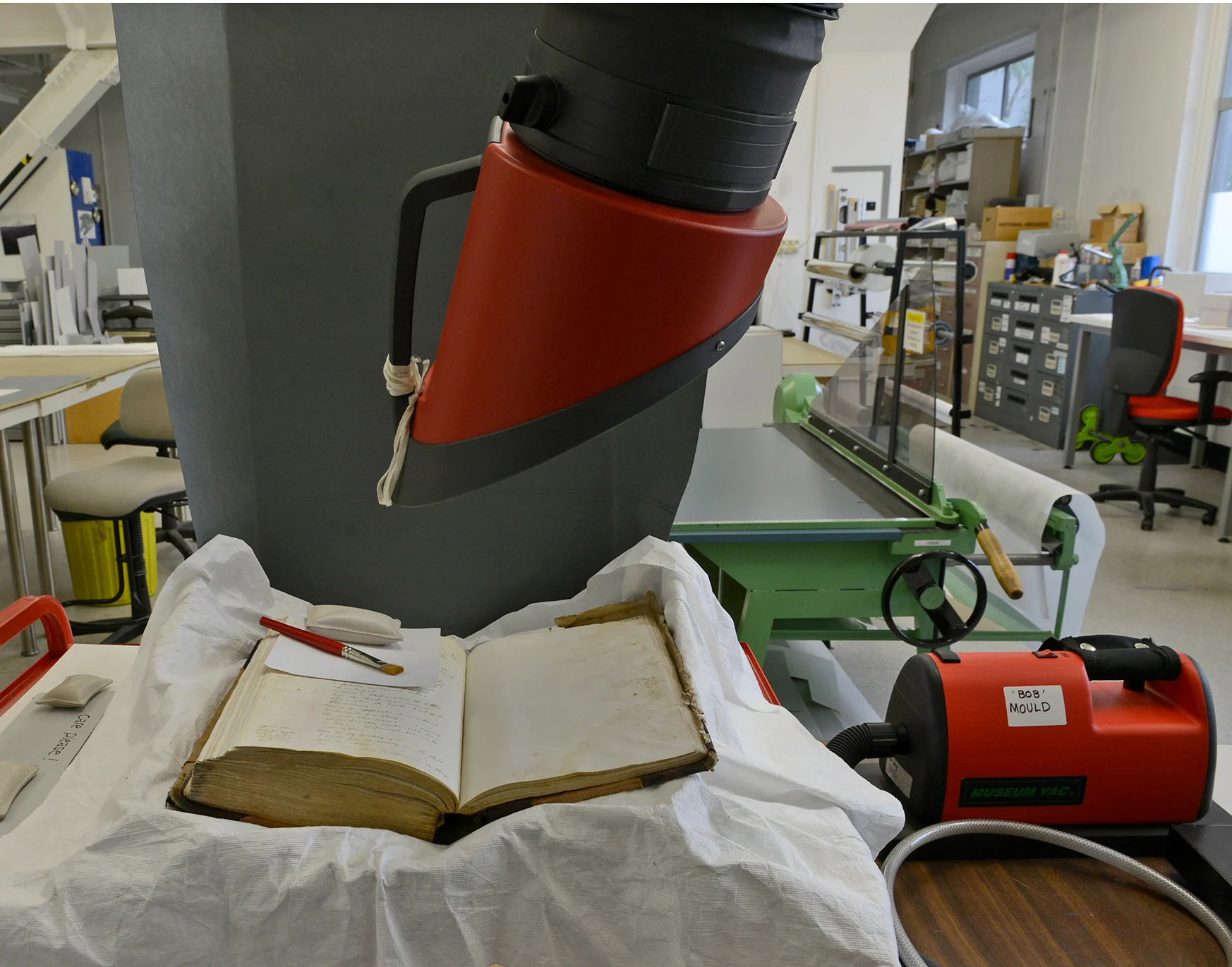Dealing with killer collections at Archives New Zealand
Working with archives can sometimes be dangerous. Learn more about the unusual and potentially hazardous items we've come across at here at Archives New Zealand.
The dangers of working with archives
Working with archival records does come with its dangers. At Te Rua Mahara o te Kāwanatanga Archives New Zealand, we occasionally come across unusual and potentially hazardous items included in files. Past examples have included the powerful insecticide poisonous to humans — DDT — gun powder and, believe it or not, rat droppings.
Archives New Zealand is home to over 6 million records from government agencies that date back as far as 1840. Staff who physically interact with the archives are given special handling training by the preservation team to ensure they, and the records, are kept safe.
One recent example was an envelope containing shell casings — which may have contained gunpowder residue — that were referred to the preservation team to assess. If we decide that the contents of a record or archive present a hazard, then a handling restriction is put in place to protect ourselves and the public. In this case, the shell casings were deemed not hazardous, so a custom-made box was designed to protect the items and enable easy access.
Is your collection killing you?
Handling potential hazards is commonplace across the museum and archive sectors. We recently had the opportunity to attend a course at Te Papa, called ‘Is your collection killing you?’ The course covered a variety of potential hazards found in museum and archive collections. It was run by conservators Victoria and Andrew Pearce from Endangered Heritage Australia and was attended by archives and museum staff across New Zealand.
The course reinforced to us all that hazards can also be found in our homes.
Many different hazards were discussed in detail, for example asbestos, which can be found in a variety of items and in unexpected places such as linoleum, wallpaper, flooring tiles, Bakelite, vintage mattresses, and WW2 gas masks. Who would have thought a gas mask contained asbestos?
Attendees learned about the dangers of heavy metals such as cobalt, cadmium and lead which may be present in old materials such as paint pigments and dye. Mercury can be found in some inks and paints containing cinnabar that are used in cartography.
Hazards we face in conservation and preservation
Mould is another hazard we often face in conservation and preservation. We recently completed a lengthy project cleaning mould from 2 fragile registers from the 1890s. Personal protective equipment and gloves were worn for protection. We also use an extraction hood and a museum vacuum cleaner. After the mould dust is removed, mildew stains are often left behind, but the archives can be handled safely. Mould becomes inert in the low humidity environment maintained in our repository.
Occasionally, we come across biological hazards. When rat droppings were found in a file transferred by an agency, affected pages were photographed and digitised to serve as a backup copy in case the cleaning process caused damage. Under the Public Records Act 2005, a public archive should not be destroyed. So, if the contents of such a record, or the record itself, poses a risk or hazard and needs to be disposed of for safety, our disposal and acquisition team needs to be involved.
Working in preservation provides a lot of variety and responsibility to our nation’s heritage and taonga tuku iho. Recently, our technicians began a freeze-drying project — a process called sublimation that allows paper-based archives to dry without distortion.
Preservation work requires precision and skill and allows staff interesting glimpses into New Zealand’s history.
Staying vigilant about toxic materials
Archives and museums provide a great way to promote hazard awareness to the public, who may have hazardous collections in their own homes. Some toxic materials are again becoming available through uncontrolled imports and internet purchasing. Such items include toxic naphthalene mothballs, imported medicines and paints containing hazardous ingredients.
This shows that we still need to remain vigilant to the materials we’re exposed to.

